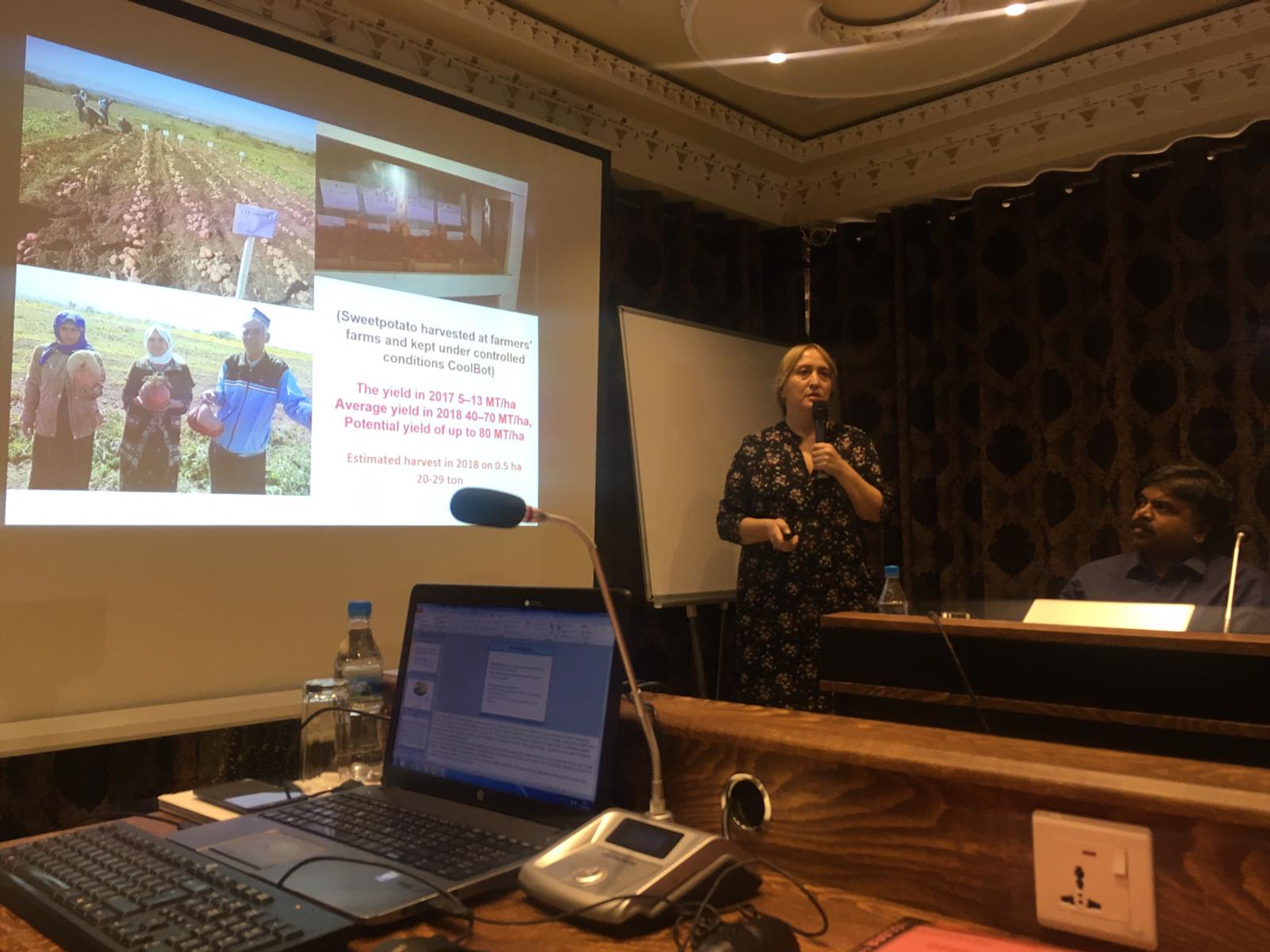Маркази Байналмиллалии Картошкапарвари фестивали охиринро дар Душанбе бо максади баланд бардоштани сатхи огохии ахоли дар бораи эхтимолияти картошкаи норанчи барои паст кардани сатхи гуруснаги ва нимгуруснаги дар хамин шахр ташкил намуд. Картошкаи норанчи ин хосили устувор, зудпарвар дорои калория ва бета-керотин мебошад, ки дар дохили организм ба витамини А мубаддал мегардад. Роли асосиро дар ташаббуси бехтар гардонидани бехатарии озукавори, гизо ва доромади фермерхои хурд дар Африка ва Азия бозид.
Фестивал дар доираи лоихаи “Дастгирии Истехсоли Картошкапарвари ва Тадкикот барои бехтар гардонидани бехатарии озукавори дар Хатлон, Мархалаи II” бо дастгирии хукумати ШМА ташкил карда шуда буд. Дар фестивал 31 намоянда аз сохторхои давлати, гайридавлати ва ташкилотхои байналмиллали иштирок карданд дар мобайни онхо Барномаи Гизои Чахони (WFP) ва ташкилоти Озукавори ва Кишоварзи (FAO)низ иштирок доштанд.
Дар Чорабини презентацияхо аз тарафи Доктор Расудан Мдивани рохбари минтакави оиди Осиеи Маркази ва Кавкоз дар бораи афзудани истехсолот ва шаклхои гуногуни истифодаи картошкаи ширин дар Точикистон; Коршинос оид ба картошкаи ширин Шрикант Атталури дар бораи пешбурди муваффаконаи хосилоти Маркази Картошкаи Ширин дар Одиша, Индия. Менечер, Азамат Азаров Пеш баходихии таъсири иктисоди ба навъхо ва техналогияхои Маркази Байналмиллалии Картошкапарвари оид ба картошкаи ширин ва картошка барои фермерхои хурд дар Точикистон пешниход карда шуда буданд
Фермерхо аз ду нохияи Точикистон, ки дар он нохияхо Маркази Байналмиллалии Картошкапарвари кор мекунад хосили баланди картошкаи ширинро ба иштирокчиен пешниход карданд ва зиеда аз 50 кило картошкаи ширин ба мехмонон ва иштирокчиени фестивал фурухта шуд. Иштирокчиен бо кулчакандхо ва хурокхои аз картошкаи ширин тайоркардашуда зиефат карда шуда буданд . Барномаи фестивал барои пайдо кардани имконият барои мухокима, вохурихо, мубодилаи тачриба,таъсис додани муносибатхои нав дар байни иштирокчиени мухити гуногун таъсис шуда буд.
Фестивал мохи октяри 2018 дар мехмонхонаи Атлас, Душанбе баргузор гардид. Руси ва англиси забонхои расмии фестивал буданд ва хамонзамон ба иштирокчиен тарчумаи лозими дастрас гардонида буд. Огоихо, хучатхо, муоширатхо ба забони лозима, яъне англиси е руси дастрас гардида буданд.


